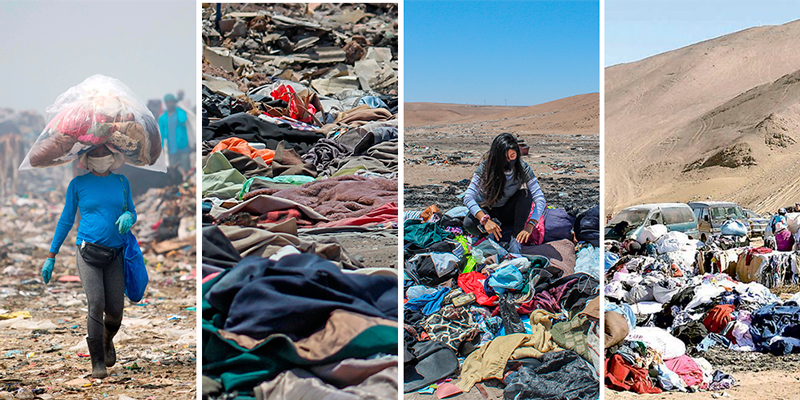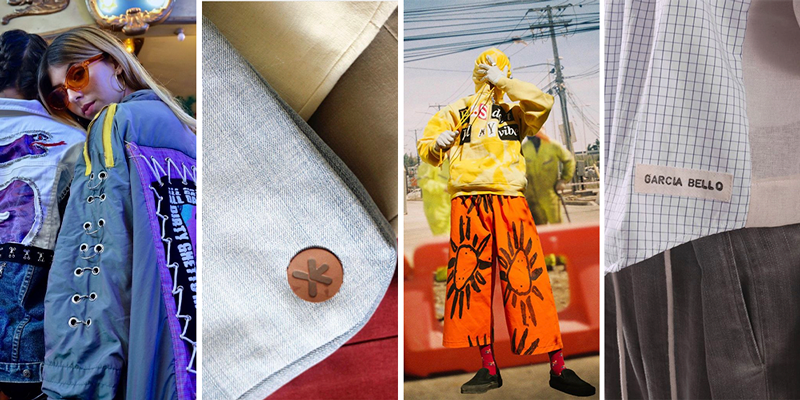1. State of the art, project management and documentation¶
For the first week, we’ve to give ourselves a thematic frame on defining our final project idea and started to getting used to the documentation process.
Research¶
Today's Fibers Universe¶
Natural Fibers: Fragments, strands or hairs taken from plants or animals. This fibers are divided into two main classifications:
Animal Fibers (Protein fibers): Derived from animals including alpaca, leather, silk and wool.
Plant Fibers (Cellulose fibers): Derived from plants, are products of agriculture and include fibers such as flax, jute, hemp and bamboo (for linen).
Artificial Fibers: Made by the chemical transformation from natural materials. These ones account for approximately 8% of global man-made fibers. This fibers are derived from a range of plant-based and woody materials, which require intensive chemical manufacturing processes to be transformed first into pulp and then into ”regenerated” cellulosic filaments.
This fibers include modal, TENCEL Lyocell, Viscose made from bamboo and Viscose made from wood.
Synthetic Fibers: Obtained from products such as oil or plastic. Created using a polymerization process combining many small molecules into a large molecule ( a polymer). Many of the polymers that constitute these fibers are similar to compounds that make up plastics, rubbers, adhesives and surface coatings.
Some examples include polyester, nylon, spandex, imitation leather, acrylic, polyethylene and polypropylene
End of clothes life¶
Trash: End of the linear economy timeline. Today, we have a global production of almost 150 million garments per year since the average consumer is buying 60% more clothes than 15 years ago, and they conserve them for half of the time. We buy and throw away more clothes than ever.
Environmental impacts: Every one second, the equivalent of a truckload of clothes is thrown away, which means 92 million tons of textile waste per year.
Globally, only 12% of the material used for clothing is recycled and less than 1% is recycled into new clothing.
Second-hand clothing creates waste problems in poor countries. Some news here
Recycling - Upcycling: Management at the end of the cycle of the circular design process. Part of the circular economy cycle. Reuse of existing garments or materials to create new and better products.
Some interesting local projects¶
-
Sporatex by Spora Biotech, Mycelium Mushroom Leather for clothing and accessories labeling.
-
LABVA, Biomaterials Lab in Valdivia, Chile. Aristotelia chilensis (MAQUI) plant based biotextile.
-
El nuevo vestir PODCAST, a space to learn about sustainable fashion, and change our ways of dressing, looking and relating to our closet. By Quinta Trends and Sofía Calvo.
-
RETEX is a textile recycling company that has sustainability as a pillar of its business strategy. Since 2013, they began to recycle clothing and they became the biggest clothing recycler company in South America.
Coding, my archinemesis¶
Coding has always been hard for me, the way that you have to learn a new language with all of the lines, colors, programming, numbers, completely out of my comfort zone.
But now, I want to give it a second chance. I hope that Gitlab, which is completely new to me, will be friendlier to learn.
First of all, I look for some references in the pages of the Fabricademy Alumni, then I sketch some ideas in my notes and start looking for information that I consider important.
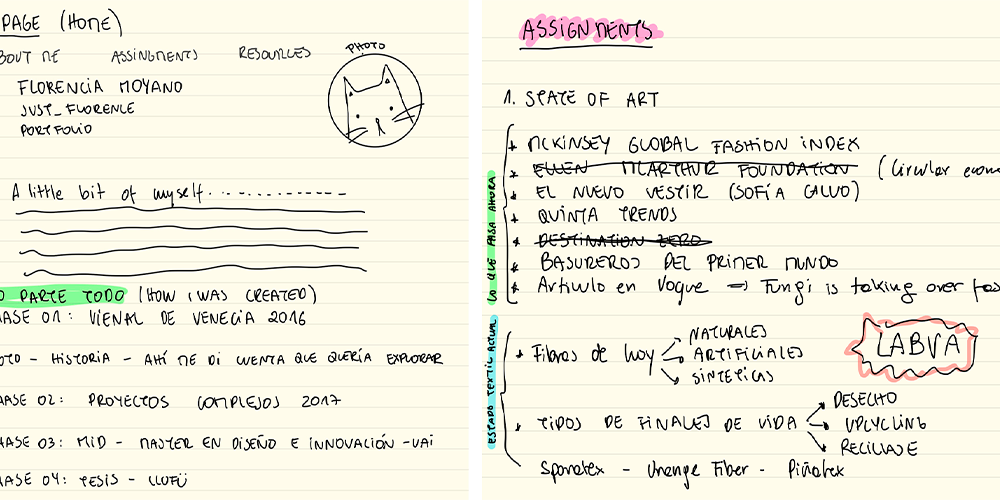
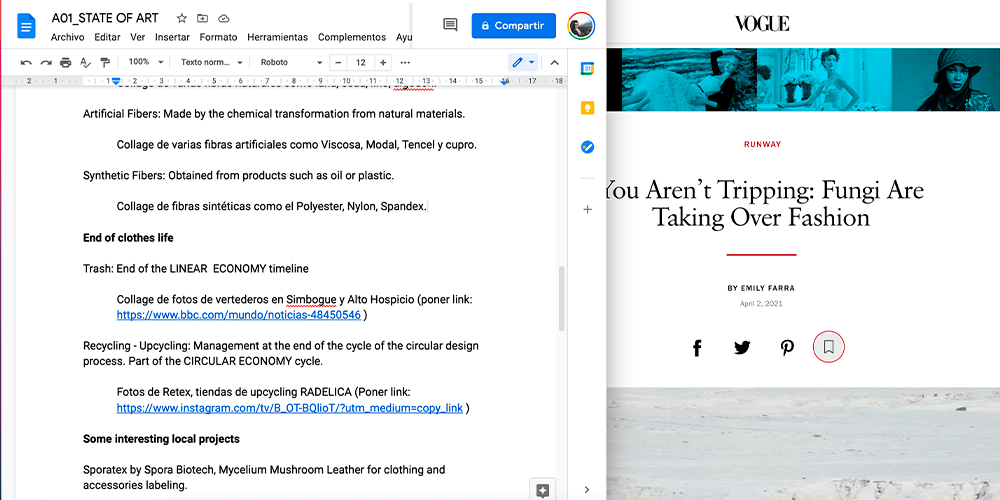
Then I started to get more familiar with the codes in the classes. I had a couple of doubts, but luckily I managed them well with some help and began to understand the Gitlab language much more.
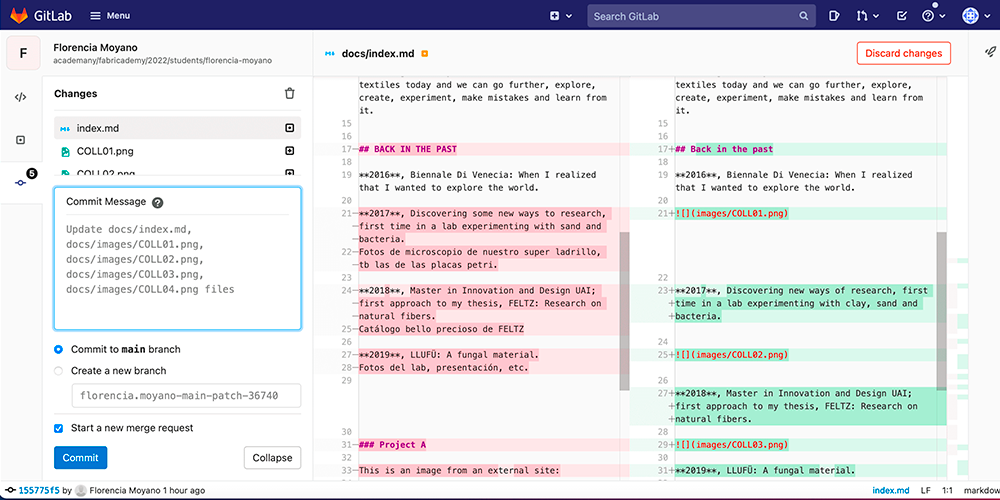

For the collages, I made a template in Photoshop so that all the images will stay on the same line.

Some interesting links¶
Thanks for reading! See you next week!



